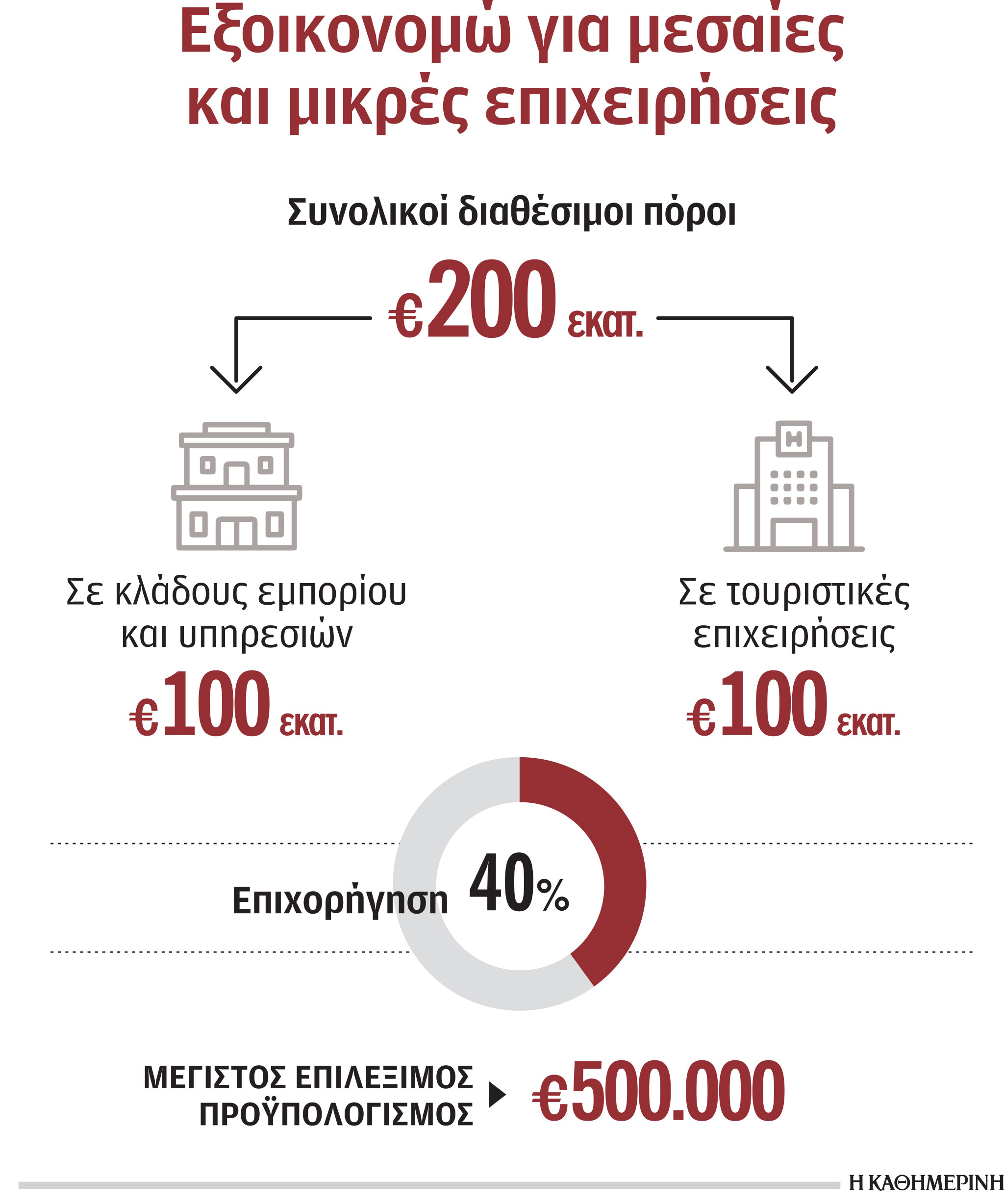
The countdown is underway to start the implementation of the “Save” program for medium, small and micro enterprises. The program is expected to be presented by the Minister of Environment and Energy. Kostas Skrekas At a press conference scheduled for today, Alexandra Sduku, Secretary General of Energy and Minerals, announced last August an initiative funded by the Recovery and Resilience Fund.
According with information “K”, the available resources amount to a total of 200 million euros, half of which will be directed to the trade and services sector, and the remaining 100 million euros to the tourism business. Thus, the beneficiaries of the action are operating medium, small and very small enterprises operating in the field of trade, services and tourism (with a limit of 100 beds).
For trade and services, projects with a total budget (excluding VAT) up to 100,000 euros are supported. For the tourism business, projects with a total budget between 50,000 and 500,000 euros are subsidized, with a support rate of 40% for medium-sized businesses and 50% for very small and small businesses. Each enterprise can apply for funding for each VAT payer ID, the maximum allowable budget of which cannot exceed 500,000 euros.
The beneficiaries of the action are trade, service and tourism enterprises.
According to the program guide seen by “K”, through the action of reducing emissions of pollutants (CO2) by at least 30%, saving primary energy by at least 30% and upgrading the energy category based on the certificate, an energy efficiency (PEA) of at least than two energy classes. Documentation of the need for interventions follows solely from the energy audit report and/or from the PEA.
Significantly, eligible interventions include energy retrofitting of the building envelope (e.g., thermal insulation of non-transparent structural elements, replacement of transparent structural elements, and installation of shading systems), installation of shading systems, lighting system upgrades (interior and exterior), and energy-saving interventions in space heating systems. This type of intervention includes the replacement of boilers with heat pumps, the strengthening of the thermal insulation of distribution networks, the replacement of terminal devices with new, more energy efficient ones, the installation of a heat pump and the replacement of storage devices with new, more energy efficient ones.
Eligible costs are divided into costs associated with the implementation of measures and intangible assets associated with the preparation, submission and monitoring of the application, as well as the final control of the achievement of minimum energy targets. These include, for example, the fees of the energy auditor and the energy inspector, the fees of engineers for issuing a building passport, preparing the necessary studies, issuing the necessary permits, etc.
Source: Kathimerini
Lori Barajas is an accomplished journalist, known for her insightful and thought-provoking writing on economy. She currently works as a writer at 247 news reel. With a passion for understanding the economy, Lori’s writing delves deep into the financial issues that matter most, providing readers with a unique perspective on current events.